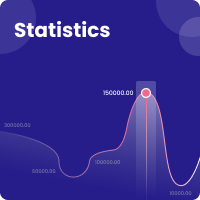The audiovisual object and the industrialization of conscience
Abstract
The step from print culture to digital culture has substantially modified forms of conscious apprehension of the subject in contemporary times. Both the market and the production are now defined from cognitive dynamics that stimulate the flow of consciousness and determine relocation processes in space and time. After that system is a special object is unveiled: the visual, great technical adequacy of the apprehensive temporal flow that overlaps with the perception of reality and subtracts mnemonic capacities of the subject of perception. We explore this phenomenon trying to observe the technical and symbolic features of this type of objects.References
Adorno, T. W. y Horckheimer, M. (1997). Dialéctica de la ilustración fragmentos filosóficos. Madrid: Trotta.
Benjamin, W. (1989). La obra de arte en la época de su reproductibilidad técnica. Buenos Aires: Taurus.
Blondeau, O. (2004). Capitalismo cognitivo, propiedad intelectual y creación colectiva. Madrid: Traficantes de sueños.
Bordieu, P. (1997). Sobre la televisión. Barcelona: Anagrama.
Debord, G. (2007). La sociedad del espectáculo. Valencia: Pre-textos.
Debray, R. (1994). Vida y muerte de la imagen. Barcelona: Paidós.
________. (1997). Transmitir. Buenos Aires: Manantial.
Heidegger, M. (1994). Conferencias y artículos. Ediciones del Serbal: Barcelona.
Husserl, E. (2002). Lecciones de fenomenología de la conciencia interna del tiempo. Madrid: Trotta.
Martínez L., S. (2010). La crítica de la cultura después de la cultura. En Revista de Estudios Visuales, 7. Tomado de http://www.estudiosvisuales.net/revista/pdf/num7/07_sergiomluna.pdf
Marx, K. (1976). El capital. Madrid: EDAF.
Rifkin, J. (2000). La era del acceso. La revolución de la nueva economía. Barcelona: Paidós.
Serres, M. (2012). Petite Poucette. París: Le Pommier. Pulgarcita (traducción: Luis Alfonso Paláu).
Stiegler, B. (2002). La técnica y el tiempo I. El pecado de epimeteo. Hondarribia: Hiru.
________. (2004). La técnica y el tiempo III. El tiempo del cine y la cuestión del malestar.Hondarribia: Hiru.
________. (2008). El design de nuestras existen-cias en la época de la innovación. (Traduc-ción Luis Alfonso Palau). París: Fayard.
________. (2008). Economía de lo hipermaterial y psicopoder. Entrevistas con Philippe Petit & Vincent Bontems. (Traducción Luis Alfonso Pa-lau, 2013). París: Mille et une nuits.
________. (2012). El marketing destruye todos las herramientas del saber. Entrevista realiza-da por Thomas Johnson & Marc Borgers para Soldes Traducción Luis Alfonso Palau (2013) Tomada en 10/ 2013 de http://colombiakritica.blogspot.com/2013/02/sociedad-de-consumo.html
Valéry, P. (1928). La conquista de la ubicuidad. En Valéry, P. (1999). Piezas sobre arte. Madrid: Vi-sor.










